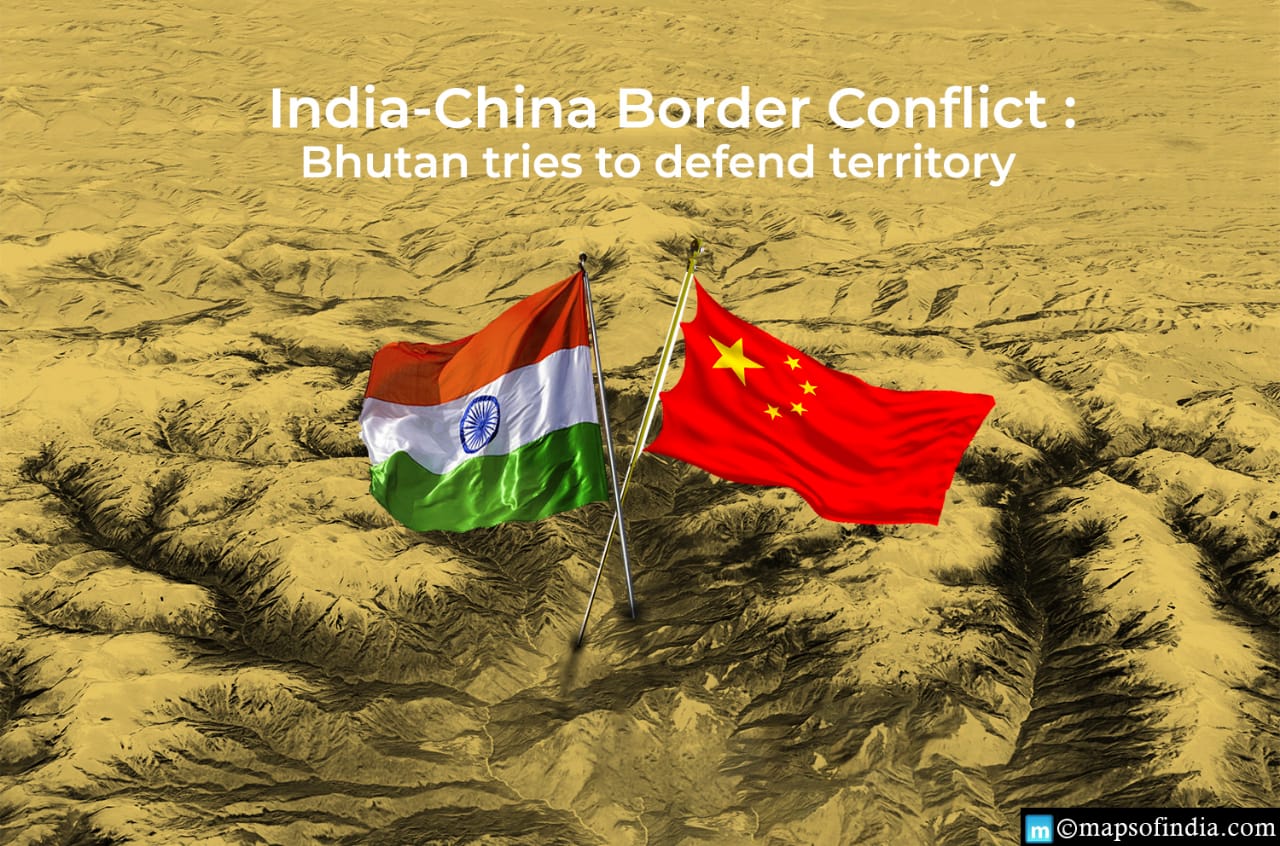With tensions still tense along the India-China border, landlocked Bhutan is trying to protect its territory while pleasing both Asian empires. As Bhutan gears up for border negotiations with Beijing, the Himalayan monarchy has conveyed to India that it would not acknowledge China’s rights to the Doklam plateau during the discussions. In 2017, India’s military decided to intervene on Bhutan’s behalf to prevent China from constructing a road in the disputed territory overlooking a tiny strip of land connecting India’s northeastern states to the rest of the nation.
According to the locals, China has long promised Bhutan ownership of territories along their disputed northern border, formally closed for years in exchange for Doklam. However, Beijing has increased pressure on Bhutan to address the problem in the past few years, according to satellite data obtained by Indian intelligence and Bhutanese authorities, which reveal China has established military outposts and entire communities in territories claimed by Bhutan.
On the other hand, Bhutan is hesitant to do anything to land it in the middle of a battle between India and China. Instead, the country plans to give Beijing the prospect of eventual full diplomatic relations to delimit the northern boundary, avoiding the Doklam issue while preventing Chinese aggression in other regions.
It is unknown if China would agree to this. However, according to China’s Foreign Ministry representative, Bhutan and China have “mechanisms for border talks and experts meeting”. Those further meetings are scheduled after agreeing to a landmark blueprint to speed border negotiations in October.
The Foreign Ministry of India and the Bhutanese Embassy in New Delhi refused to respond to the border negotiations with China. However, last month, an Indian Foreign Ministry official stated that Prime Minister Narendra Modi’s administration had “noted the signing of the memorandum of understanding” with China and Bhutan, noting that India was conducting its boundary talks with Beijing.
Bhutan is China’s sole neighbour without diplomatic relations, and the Himalayan kingdom formally permitted India to guide its foreign affairs until the two established a new friendship treaty in 2007. Nonetheless, India retains power in Bhutan, contributing more than 80% of its economy and most of its transportation linkages in and out of the country.
Tensions have been intense along the India-China border recently, with the worst conflict in years breaking out last year over a different part of the 3,500 km boundary. Negotiations to settle the dispute have stopped over who will remove soldiers first from a vital high post near the Karakoram Pass, which snakes across the Himalayas.
China has long opposed the placement of its trijunction boundary with India and Bhutan, which goes back to a treaty signed in 1890 between Qing rulers in Beijing and British colonizers who dominated the country. Indian military strategists have long feared that Chinese forces may infiltrate via the Chumbi Valley and block off the Siliguri Corridor, often renowned as the “Chicken’s Neck,” allowing them access to all of the country’s northeastern provinces, which are home to around 45 million citizens.
At least 30,000 Indian soldiers are stationed along the corridor, which is less than 22 km wide at its closest part and runs through territory bordered by Bangladesh to the south and China, Nepal, and Bhutan to the north. India has pushed Bhutan to pursue a stronger relationship with China. Relations were strained earlier this year when Modi’s administration halted vaccine supplies to Thimphu due to an outbreak of COVID-19 inside its borders.
